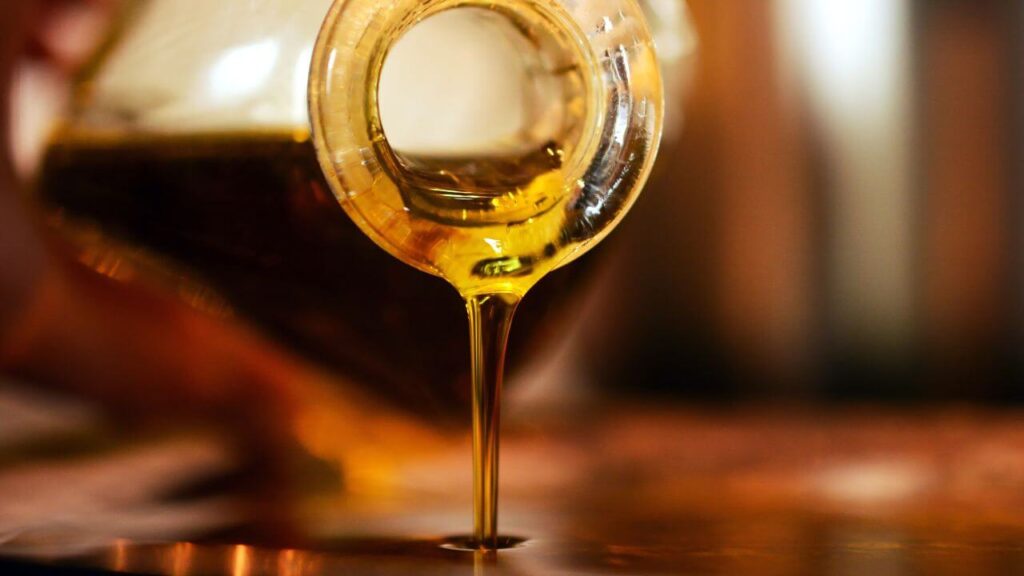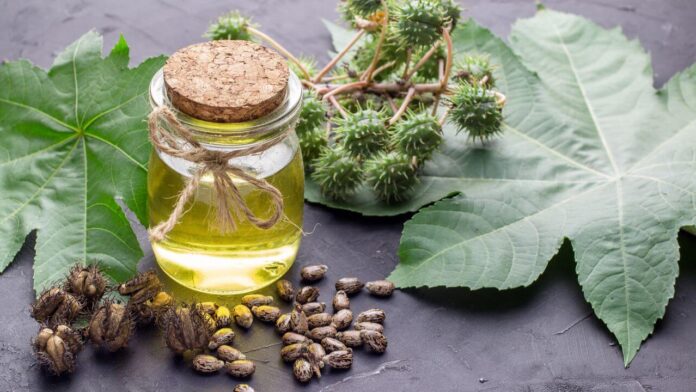Ugh, knee pain. I still remember the first time my knee decided to rebel against me after a particularly ambitious hike last summer. Each step became a wincing reminder that I wasn’t 20 anymore. Sound familiar? You’re not alone.
When my aunt (the family’s unofficial “natural remedy guru”) suggested castor oil for my angry knee, I honestly laughed. But desperate times call for desperate measures, right? Little did I know this sticky, yellow-ish oil would become my go-to solution. This article dives into how to use castor oil for knee joint pain – something I wish I’d known years ago before filling my medicine cabinet with pills and creams that barely worked.
Castor oil comes from the seeds of the Ricinus communis plant and has been a healing staple since ancient Egyptian times (those folks were onto something!). The secret sauce? Something called ricinoleic acid that fights inflammation like nobody’s business. Whether you’re battling arthritis, recovering from last weekend’s “I’m still athletic” injury, or just dealing with creaky joints that forecast rain better than meteorologists, I’ve gathered everything you need to know about this overlooked remedy.
Understanding Knee Joint Pain
Let me tell you, knees are complicated little beasts. Mine started acting up after years of pretending I could still play basketball like my college days. The doctor explained it to me with a sigh that screamed “I give this speech ten times a day.”
Your knee isn’t just a simple hinge – it’s a complex neighborhood of bones, cartilage, ligaments, and tendons all trying to live harmoniously together. When one tenant gets angry (inflamed) or moves out (gets damaged), the whole community suffers.
From what I’ve learned through my own painful journey and countless late-night research sessions, knee pain typically comes from:
- Osteoarthritis – basically your cartilage throwing in the towel after years of loyal service
- Rheumatoid arthritis – when your immune system decides your joints look suspicious
- Injuries – like when I convinced myself that jumping for that frisbee was a good idea
- Gout – those nasty uric acid crystals having a party in your knee
- Bursitis – inflammation of those fluid-filled cushions that usually protect your knee
While serious knee problems definitely need a doctor (ignore this advice at your peril – I learned the hard way), many folks with mild to moderate knee complaints find natural remedies surprisingly effective. If castor oil helps your knees, you might also want to check out other natural approaches like how to cure plantar fasciitis in one week or acupuncture for foot pain – my sister swears by both.
The Science Behind Castor Oil
I’m a skeptic by nature (just ask my wife), so when my aunt recommended castor oil, I immediately went down a research rabbit hole. Turns out, this isn’t just some old wives’ tale – there’s actual science backing it up.
About 90% of castor oil is something called ricinoleic acid. This fatty acid is a natural anti-inflammatory powerhouse that works similarly to capsaicin (the stuff that makes chili peppers hot), though through different pathways. When I first read the studies, I was genuinely surprised by how much scientific evidence supported what my “crunchy” relatives had been preaching for years.
When you rub this stuff on your achy knee, it:
- Fights inflammation by telling your body to chill out on producing those inflammatory compounds
- Gets blood flowing better to the area (I actually noticed my knee feeling warmer)
- Helps loosen up stiffness – critical for those “why am I walking like I’m 90?” mornings
- Provides pain relief without the stomach issues I got from ibuprofen
- Reduces swelling (I could finally see my kneecap again!)

How to Use Castor Oil for Knee Joint Pain
After some embarrassing trial and error (pro tip: castor oil WILL stain your favorite pants), I’ve figured out the most effective ways to use this sticky miracle worker. Here are the methods that actually worked for me and countless others I’ve evangelized to:
1. Castor Oil Packs – My Weekend Warrior
This is the heavy hitter in my pain-relief arsenal. I save these for weekend evenings when I can actually relax for an hour without my kids using me as a jungle gym.
What you’ll need:
- Cold-pressed, hexane-free castor oil (I learned the hard way that quality matters)
- Clean cotton flannel cloth (an old t-shirt works in a pinch)
- Plastic wrap from the kitchen
- Heating pad or hot water bottle
- Old towel you don’t care about (trust me on this one)
Here’s what I do:
- Fold the flannel to cover my entire cranky knee
- Warm the oil slightly between my palms (don’t microwave it – another lesson learned painfully)
- Drizzle oil on the cloth until it’s damp but not dripping
- Place it on my knee like a sad little bandage
- Wrap with plastic to keep my couch from becoming an oil slick
- Put the heating pad on top at a comfortable temperature
- Watch an episode of whatever show I’m binging (30-60 minutes)
- Clean up with baking soda and water (dishsoap works too)
I typically do this 3-4 times a week when my knee is really acting up. After about two weeks of this ritual, I noticed I wasn’t wincing going up stairs anymore.
2. Direct Massage Method – My Weeknight Quick Fix
When I don’t have time for the full production (most weeknights when I’m scrambling between helping with homework and trying to maintain some semblance of adulthood):
- Pour a quarter-sized amount of oil into my palm and warm it by rubbing my hands together
- Slather it directly onto my knee in circular motions
- Massage gently for 5-10 minutes while half-listening to my teenager explain why their homework is “literally impossible”
- Either cover with a warm washcloth or just pull my sweatpants over it
- Let it do its thing for at least 30 minutes or overnight if I’m feeling particularly lazy
I do this almost daily when my knee’s being particularly stubborn.
3. My Secret Weapon: Castor Oil Plus Essential Oils
After some experimentation (and one memorable incident that left my entire bathroom smelling like a spa exploded), I found this blend works wonders:
My go-to mix:
- 2 tablespoons castor oil as the base
- 4 drops of peppermint oil (creates that icy-hot sensation)
- 3 drops of eucalyptus oil (my sinuses thank me too)
- 2 drops of lavender oil (helps me ignore my kids asking “what’s that smell?”)
I mix this concoction in a small glass jar and apply it using either method above. The aromatherapy is an added bonus – kind of like when I discovered focusing on gratitude when feeling down could actually improve my outlook. Two birds, one stone!
Types of Castor Oil for Joint Pain Relief
Not all castor oil is created equal – a lesson I learned after wasting money on a cheap bottle that smelled vaguely like old crayons. After some expensive trial and error, here’s what I discovered:
| Type | What It Actually Is | When I Use It |
| Cold-pressed | The good stuff extracted without heat damage | My go-to for everything |
| Jamaican Black | Dark, unrefined with ash content (looks terrifying) | When my knee is screaming at me after gardening all day |
| Organic | No chemical nastiness | Regular use (worth the extra few bucks) |
| Herb-infused | Fancy castor oil with added herbs | Special occasions when I’m feeling fancy |
| Hydrogenated castor oil | Hard white stuff (think lip balm consistency) | Never – useless for joint pain |
I personally stick with cold-pressed organic oil for my regular routine. The Jamaican Black variant is more potent but stains everything it touches (RIP my favorite sheets). Whatever you choose, make sure it’s hexane-free – your skin doesn’t need that chemical absorption.
Complementary Treatments to Use with Castor Oil
Let’s be real – I was skeptical that just rubbing oil on my knee would be a miracle cure. It wasn’t. But combined with these other approaches, I finally found relief:
- Turmeric supplements: I mix this golden powder into my morning smoothie. My wife says it makes the smoothie taste like dirt, but my joints disagree.
- Moving (even when I don’t wanna): Gentle walking or swimming keeps my knees from freezing up. Having proper gear matters – learned that lesson after a particularly uncomfortable swim session.
- Hot and cold therapy: I alternate between a heating pad and frozen peas wrapped in a kitchen towel (sophisticated, I know).
- Fish oil supplements: After reading that omega-3s help with inflammation, I added these to my daily routine. The occasional fishy burps are a small price to pay.
- Water, water, everywhere: Turns out my joints like being hydrated. Who knew?
Much like how taking care of your teeth prevents bigger problems, I’ve found that this multi-pronged approach works better than any single solution alone. My physical therapist approved of this regimen, which made me feel smugly validated.

Precautions When Using Castor Oil
I learned some of these lessons the hard way, so let me save you the trouble:
- Test it first: Slather a tiny bit on your wrist before going full-knee. My neighbor developed a lovely rash by skipping this step.
- Pregnancy concerns: My pregnant sister-in-law was advised to avoid castor oil completely – apparently it can trigger contractions. Talk to your doctor!
- Wounds are a no-go: Don’t put this stuff on cuts or scrapes. The burning sensation is…memorable.
- Check with your doctor: Especially if you have a diagnosed knee condition. My doctor actually supported my castor oil use but wanted to know what else I was trying.
- Watch for reactions: If your skin turns red, itchy, or you feel like your knee is on fire (not in a good way), wash that stuff off pronto.
I’m all for natural remedies, but they work best alongside proper medical care, not instead of it. My doctor and I have a deal – I try my “hippie stuff” (his words) but I promise to tell him exactly what I’m doing and to follow his advice for serious issues.
When to See a Doctor
Look, I’m a stubborn guy who avoided doctors until my wife basically dragged me there. Don’t be me. While I’ve talked at length about how to use castor oil for knee joint pain, there are times when you need to put down the oil and pick up the phone:
- Your knee hurts so bad you’re seeing stars
- It’s swollen like a balloon and warm to the touch
- You can’t put weight on it without collapsing dramatically
- You’ve got a fever along with the knee pain
- You just did something spectacular and traumatic to your knee (my backyard football injury qualified here)
- You have arthritis or another condition that’s getting noticeably worse
Much like knowing when a hurting dental implant needs attention, recognizing when your knee needs professional help can save you from long-term problems. No amount of castor oil will fix a torn ligament – a lesson I learned eight weeks and one surgery too late.
Real Users’ Experiences
I’m not alone in my castor oil adventures. Here’s what I’ve heard from fellow knee pain sufferers in my neighborhood walking group and online forums:
Maria, 62: “I thought my gardening days were over until my daughter suggested castor oil packs. After three weeks, I could kneel again without screaming. Now I do the packs three times a week as maintenance.”
John, 48: “Running destroyed my knees by 40. I massage castor oil in before bed every night. The morning stiffness is about 80% better. Not perfect, but I’ll take it.”
Samantha, 35: “I combine castor oil with gentle yoga. The combination has been life-changing for my arthritis. My rheumatologist was skeptical but now actually asks how my ‘oil routine’ is going.”
The common thread I’ve noticed? Most people see improvement within 2-4 weeks if they’re consistent. Nobody experienced overnight miracles (despite what some YouTube videos promise), but gradual, sustainable relief seems to be the norm.
How to Incorporate Castor Oil into Your Pain Management Routine
After months of experimentation, I’ve settled on this weekly schedule that seems to work without taking over my life:
- Monday, Wednesday, Friday: Full castor oil pack treatment while I catch up on my shows (45-60 minutes)
- Tuesday, Thursday, Saturday: Quick massage application before bed
- Sunday: Day off (even my knee deserves a break)
I’ve found this routine manageable enough to stick with long-term. Like how I finally managed to implement those energy-saving habits at home, the key was finding a balance between effectiveness and practicality. Let’s be honest – the best remedy is the one you’ll actually use consistently.
Where to Buy Quality Castor Oil
After purchasing one bottle that smelled suspiciously like motor oil and another that seemed diluted with who-knows-what, I’ve become picky about sources:
Look for:
- Organic, cold-pressed oil (the words “hexane-free” should be on the label)
- Dark glass bottles (keeps the oil from degrading)
- Established brands with real customer reviews
- A reasonable price (too cheap often means poor quality)
I’ve had good luck at our local health food store, where the owner actually uses the products she sells. Online retailers work too, but read the reviews carefully – there are some sketchy options out there. My wife ordered me a fancy bottle from a specialty herb shop last Christmas, and I’ve been hoarding it like liquid gold.
Summary: How to Use Castor Oil for Knee Joint Pain
So there you have it – my journey from skeptic to reluctant evangelist of the sticky stuff. Castor oil has become my go-to for managing knee pain through its anti-inflammatory magic and ability to boost circulation. Whether you opt for the full pack treatment for deep relief or just massage it in when you’re short on time, consistency seems to be the secret ingredient.
Key Takeaways:
- The magic happens thanks to ricinoleic acid, which fights inflammation like a tiny warrior
- The castor oil pack method gives the deepest relief but requires more time
- Quality matters – cheap oil = disappointing results
- Combine with other approaches like gentle movement and anti-inflammatory foods
- You need to be patient and consistent (I saw results after about 3 weeks)
- Serious knee problems still need a doctor’s attention (don’t be a hero)
Images I Wish I Had When I Started:
- A step-by-step visual guide for making a proper castor oil pack
- A knee diagram showing exactly where to focus application
- Comparison photos of different castor oil types (they really do look different!)
- Before/after photos of knee swelling reduction
Just like making friends as an adult requires putting yourself out there consistently, finding knee pain relief demands patience and persistence. The results won’t happen overnight, but they might just change your daily comfort level dramatically.
Your Path to Natural Knee Pain Relief
Understanding how to use castor oil for knee joint pain is just the beginning of your journey toward natural pain management. By incorporating this time-tested remedy into your routine and combining it with other healthy practices, you may find significant relief without relying solely on pharmaceutical interventions.
Remember that healing takes time and consistency. Give your castor oil treatment at least 3-4 weeks of regular use before evaluating its effectiveness for your particular situation. Many people find that the relief gradually builds, with the full benefits becoming apparent after several weeks of application.
If you’ve found success with castor oil for your knee pain, you might also be interested in exploring other natural remedies for common ailments, such as lemon ginger tea benefits or managing abdominal discomfort.
Healing Naturally, One Application at a Time
The journey to relieving knee joint pain naturally requires patience and a willingness to try different approaches. Castor oil’s long history of use for joint pain speaks to its effectiveness, but as with any natural remedy, results may vary based on individual circumstances and consistency of application.
By understanding proper application techniques and combining castor oil treatment with a holistic approach to joint health, you’re taking an important step toward managing pain naturally and improving your overall quality of life.




